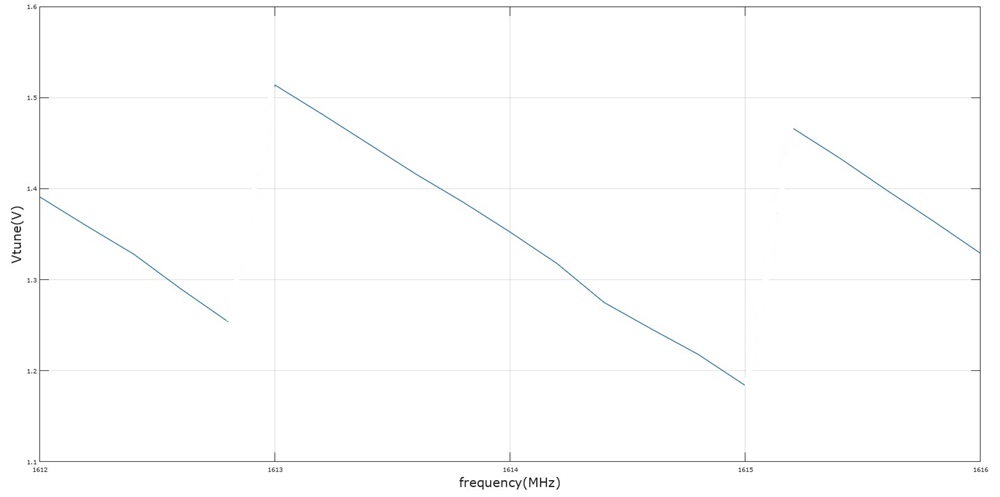Part Number: LMX25311570EVAL
Hi all,
Recently, I measured the Vtune pin to find the locked time.
To the best of my knowledge, the switching capacitor is used in the LC tank structure.
My first question is, can anyone give me the frequency of each sub-band?
And what is the type of the variable capacitor? varactor diode or MOScap?
My second question is that, according to "PLL Performance, Simulation, and Design 5th Edition" written by Dean Banerjee, the Vtune is fixed during VCO calibration.(searching the optimal capacitor combination)
However, in my Vtune measurement (please see the following picture), the voltage actually jump to a higher value before tracking to the target frequecny.
What is the reason of that voltage changing?




